Parallels: Mesoamerica and the Book of Mormon
BMAF 2004 Fall Conference 73
Parallels: Mesoamerica and the Book of Mormon
by Diane E. Wirth
Diane E. Wirth received a bachelor’s degree in Art from Brigham Young University. She is a researcher, an
author of two books and numerous articles, a lecturer, and has traveled to Mexico City and Central
America. Her specialty is Mesoamerican iconography, religion, and mythology. She recently published "Parallels: Mesoamerican and Ancient Middle Eastern Traditions". She is unique among LDS scholars, in that she traveled with the late Mayan scholar Linda Schele and studied under archaeologist David Stuart of Harvard University.
I have had an interest in Mesoamerica for over 30 years, and it’s always exciting to come across art and archaeological evidence that supports voyages from the Old World to the Americas long before Columbus because this, in turn, supports the Book of Mormon.
New discoveries in the past 30 years increasingly sustain Mesoamerica as the land where the Jaredites, Nephites, Lamanites and Mulekites lived on this continent. The things that I will be discussing include continued information about research done by myself and other LDS scholars.
The Book of Mormon is a lineage history of a people namely the Nephites. What we don’t have is an account of the more numerous Mulekites, Lamanites, and any other groups that were in the land. Similar to Old Testament writings, other cultures, for the most part, are ignored in the record of the Book of Mormon. You won’t find a history of Egypt or of Canaan in the Old Testament. You read the history of Israel, and it is same with the Book of Mormon Nephite writers.
One of the theories of our time in the field of archaeology and anthropology is the theory of diffusion, which happens to be an unpopular theory except for Latter-day Saints and several small research groups. But this theory is gaining support among several scholars from universities.
Most prefer to believe that the Old and New Worlds developed in isolation, and any similarities between them are merely coincidental. They believe that people came from Siberia through the Bering Strait and filtered down through the Americas.
But when we talk about diffusion and of world races, we speak of a scattering of races, a circulation of peoples over the continents and an expansion of cultural traits. It is the opinion of those who support the theory of diffusion that ancient people came to the Americas not only across the Bering Strait from Asia but also by way of the sea, from both the east and the west. This theory will take time to grow and develop, and it is getting stronger every year.
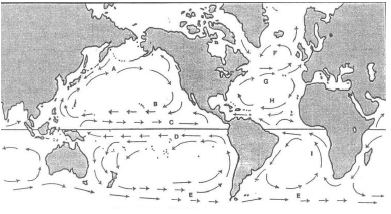
Here you can see the ocean currents that lead to the Americas. Now, I am going to show you some slides of sculptures of men from pre-Columbian times discovered in Mexico and Central America. The first is a typical Maya Indian, but the others do not look like members of the Native American race.
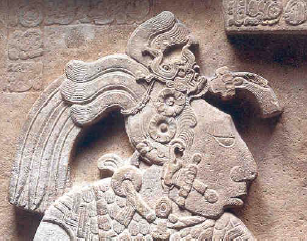
I know a few hundred of these pictures and sculptures, and I can only show a few here. The last one is the first Maya king of Palenque in Mexico. Some of the more obvious characteristics of a Middle Eastern man that can be readily agreed upon would be a large nose and a beard. Except for a few sparse hairs, Indians simply cannot grow full beards. Have you ever seen an Indian with a beard?
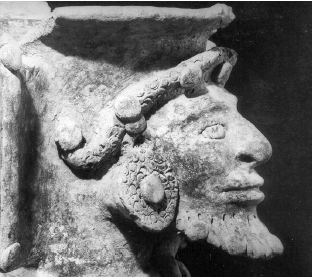
This is an important dignitary in Guatemala, He’s on the cover of my current book alongside the typical Maya Indians for comparison. Most people would see him as a Middle Easterner, but both these artifacts are from Mesoamerica.
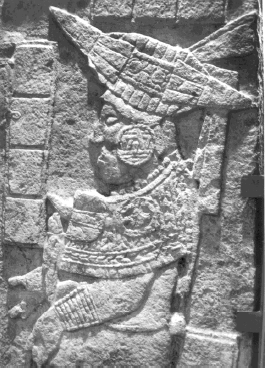
This is a line drawing of a bas relief discovered in Mexico. This bas relief, a carving of stone, is now in the National Museum of Anthropology and Archaeology in Mexico City. It is a beautiful portrayal of a Classic period Maya Indian dating to approximately 600 A.D.
Here we see the typical hook nose of a Near Easterner. He wears a lavish headdress that some researchers suggest may be of a papyrus reed boat. If you view the headdress from the top looking down, you would see two holes that could support a mast. For those of you who have read some of Thor Heyerdahl’s work, you may be familiar with some voyages made in a reed boat. While reed was not the most popular material for building boats in early times, a voyage could have been made, but we simply don’t know if this headdress represents a boat. So that is just a possibility. In the large earring of this dignitary, we see what could be the Star of David floating on the waters, a circle by a rope, which is also another nautical sign, so perhaps the symbols portrayed in the sculpture stand not only for a man but for a race of people. This type of bearded man in ancient America adds strong evidence towards proving our theory of transoceanic voyages made by the Old World peoples to the New World.
(Sister Wirth’s depiction is of a bas relief stone carving found in Mesoamerica and is dated approximately 600 A.D. The man is wearing an earflare encircled by a rope (a nautical symbol), with a central design of the Star of David floating on waters. The stela, which is on display at the large museum in Mexico City, was found in Campeche, Mexico, which is in the area of the ancient Maya.)
Those people who came across the Bering Strait from Mongolia did not have full beards. Now, Mesoamerica, as you know, is the term used by archaeologists for the land mass that includes Mexico and Central America, the area where most LDS scholars believe that the Book of Mormon took place. From these cultural types [ancient Mesoamerican including East Asian], you can see that there is obviously more than just descendants of Lehi, Jaredites and Mulekites here. We read in 2 Nephi 1:5, “Yea, the Lord hath covenanted this land unto me, and to my children forever, and to all those who should be led out of other countries by the hand of the Lord.”
The Book of Mormon speaks of three groups coming from the Old World. One at the time of the Tower of Babel, one around 600 B.C., and another shortly thereafter. I will be mentioning these three groups of people and exactly where they fit into pre-Columbian races as recorded in ancient Indian lore, writings of the early Spanish chroniclers, symbols portrayed on ancient buildings and monuments, and pre-Columbian codices. It was so wonderful when we had an example of a codex yesterday. Now, for those of you who have visited Mexico and Central America, not all, but most of the sites tourists see are on the surface and do not date to the period in which the Book of Mormon took place. Palenque, showed here as an example (which is a popular tourist site in Chiapas, Mexico) flourished from about 400 to 800 A.D. Anything earlier is buried under newer structures, and you cannot see them from the ground level.
The last two years have given scholars many opportunities to study the pre-Classic era, especially those sites dating between 500 B.C. to 200 A.D., which is the prime time for the Book of Mormon cultures. For example, until recently, the oldest murals discovered were from Bonampak in the Yucatán, painted in 796 A.D., but a spectacular discovery has been made in Guatemala with the earliest mural ever found. The San Bartolo murals date to approximately 100 B.C. to 100 A.D. These murals depict scenes from the Popol Vuh creation account, which further corroborates that record. They are presently being studied with great interest.
Today Kaminaljuyú in Guatemala is roped off for underground viewing, and all you can see are the green hills covering the pyramids. John Sorenson proposes Kaminaljuyú as a possible location for the city of Nephi. The ruins of Kaminaljuyú are located where Guatemala City stands. In this part, where mounds cover ancient buildings, the land is being sought by land developers. Fortunately, the Guatemala government has given permission to BYU and other institutions to dig. This ancient Mesoamerican city first rose to power between 500 to 200 B.C., so there is an urgency to dig while they can. The Guatemalan government hasn’t decided what to do with this site. El Mirador, is another pre- Classic site that is really exceptional because these buildings are pristine, and they have not been covered over under newer buildings with newer superimposed structures, as others have.
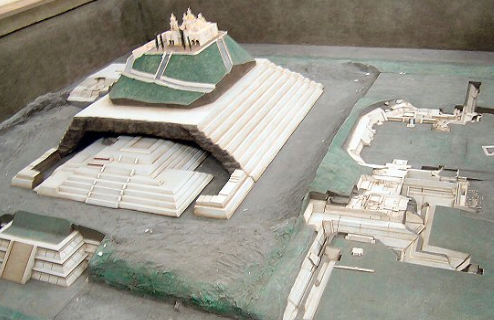
Here in Cholula, Mexico, (above) you can see parts of the earlier building, which archaeologists have left exposed. And, as I mentioned earlier, they had a habit of building one temple on top of
another, resulting in many layers of temples, and this was a common practice in the Near
East, too. The most popular site that commenced during Book of Mormon times is Teotihuacán, 30 miles from Mexico City. Some structures, like the Pyramid of the Sun, have not been covered over by newer buildings. The Pyramid of the Moon, has had several structures.
Now that we have shown plausible evidence of men coming from across the sea in ancient America, let’s look at some Book of Mormon cultures and see if we can find their presence in America’s pre-Columbian past, as recorded in both history and rock.
The oldest culture referred to in the Book of Mormon is the Jaredites. They took their leave from the Old World at the time of instruction of the Lord following the Tower of Babel incident. Now, these sculptures [displayed on the screen] are typical of the Olmec, and they are also the ones who carved these huge heads, which were heads of the kings. So the Olmec civilization dates to approximately 1500 to 300 B.C., which period is consistent with the Jaredite period. There were also other people that were there, but the Olmec were the largest civilization.
One of the earliest carvings that we have of a Semitic-type man in the New World has been dated to around 600 B.C. Here is a line drawing that is a little easier to see.
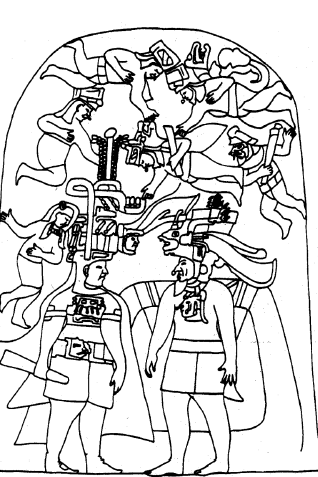
The National Geographic Society entitled the stela, “The Uncle Sam Stela,” because the man clearly has a beard and a hook nose not unlike our own Uncle Sam. Two races of man are portrayed on this stela. The figures above in the air and the man to the left are clearly different than the Uncle Sam personage to the right, who has Semitic features. The man at the left and those above him have small noses and no beards and appear to be in an attitude of greeting our bearded friend.
Some LDS archaeologists believe this scene may record a meeting between the Jaredites and the Mulekites. In fact, I think it was John Sorenson who was the first to come up with this idea. The Mulekite would be the one with the beard. Floating persons in Mesoamerican art often represent deceased ancestors, so could this be Coriantumr describing to a bearded Mulekite the story of their wars and the end of the Jaredite nation?
The historian Ixtlilxochitl was a 16th Century Toltec of royal lineage mixed with a Spanish heritage from his father, whom I will be referring to from time to time. He wrote extensively on the origin of his people in ancient Mexico, and like the Book of Mormon, Ixtlilxochitl claimed three different groups of people came from across the ocean to populate the land. The first group, he referred to simply as the Ancient Ones.
Ixtlilxochitl claimed the first people who came to Mexico, the Ancient Ones, came from a land where a high tower was constructed to reach the heavens. Their building the tower angered the Gods and resulted with the confusion of languages and a dispersal of peoples over the earth. Now, this may have been included in Ixtlilxochitl’s account after he read Genesis in the Old Testament, and it may be considered a Christian gloss. We simply don’t know.
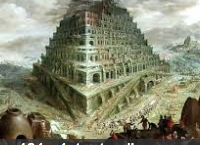
This is an artist’s conception of the Tower of Babel. If we compare the architecture of the Tower of Babel as archaeologists believed it looked with Mesoamerican or Central American temples, such as the one in Tikal in Guatemala, we find a nearly identical style. The Tower of Babel was a stepped temple tower of brick with a platform at the top, and this style must not be confused with the Egyptian pyramid, which has smooth sides and a pointed top. The earliest Egyptian pyramids such as this one at Sakkara, were stepped pyramids. Some of the earliest Mesoamerican pyramids were designed after mountains and volcanoes, followed by step pyramids resembling those of Babylon. This style continued in Mesoamerica for over 2,000 years, up until the time of the Spanish Conquest.
We do not have a great deal of information on the Jaredites, as the record is contained in only a small portion of the Book of Mormon, but we do know that these people eventually destroyed their own culture through war, just as Ixtlilxochitl claimed was the fate of the Ancient Ones, who brought the first great culture in early times to Mesoamerica.
According to the Book of Mormon, a second group of people called the Nephites and Lamanites, under the leadership of the prophet Lehi, took their leave of Jerusalem around 600 B.C. for a Promised Land. Lehi was a descendant of Manasseh, who was a son of Joseph, one of the Twelve Tribes of Israel. The bulk of the Book of Mormon deals with some of the escendants of this Tribe of Joseph, and we will look at unusual similarities between this group of people and natives of Mesoamerica.
Before Lehi and his people left Jerusalem, Lehi had a unique dream of the Tree of Life, and this dream must have been retold many times throughout several generations. There are two schools of opinion among LDS scholars. Some do not believe that this stela had any relation to Lehi’s dream, but others, including myself, believe that the story may have been recorded in stone.
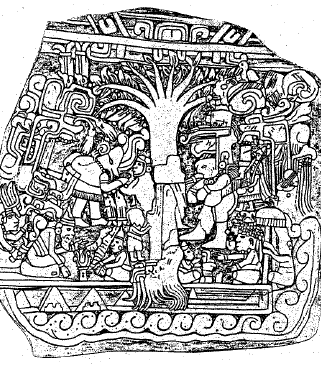
I was fortunate enough to see Stela 5 at Izapa, Chiapas, Mexico, in 1984 on a FARM-sponsored trip. They were going to have more FARMS trips, but that was the only one they ever had, and this was with John Sorenson and Jack Welch, along with Joe Allen and several others. John Sorenson is one of those who do not support this theory, as well as John Clark of BYU. I believe everyone is entitled to their opinion as long as they study all the evidence.
Stela 5 was found in 1939 and dates to approximately 200 B.C. This stela appears to contain all the major elements of Lehi’s Vision, plus many other useful bits of information. I wish I had a zoom lens, but I don’t. If you look in The Book of Mormon Reference Companion, Garth Norman has an article that has an updated version of this illustration.
In the center is the tree, and there are little balls on the tops, so that is the fruit. Of course, the fruit is very appealing because it represented eternal life and the love of God, which is ultimately given to us as a result of the Savior’s sacrifice. Lehi spoke of a river of water running near the tree, and the river represented the love of God. But the depths of the river symbolized the depths of Hell. I don’t know if you can see it, but there are little dots within this river motif, and in Mesoamerica, dots in water represent very deep water. In fact, it is often used to symbolize the waters of the underworld, which is comparable to our hell.
Lehi also spoke of a rod of iron extending along the bank. The rod of iron was interpreted as “the word of God” (1 Nephi 11:25), for if one holds on to the rod of iron (or the word of God), he cannot fall into the murky depths of hell.
At the bottom of the stela, we see a story in itself. We see a group of people seated at the base of the tree. In the first at the left, there is a woman with Egyptian style headdress, and this may be the wife of Lehi, Sariah. In front of her sits a bearded old man, who may be Lehi wearing a pointed cap or turban, which is very typical of Semitic men in the Near East during the same time period in which we are concerned with. The left one is a Mesoamerican priest, and the right one is King Jehu of Israel. There are two seated figures on either side of the tree. Their backs are facing the tree, and they may represent the two rebellious sons of Lehi named Laman and Lemuel. To the right of the tree, we see a man holding what appears to be a stylus, which is an engraving tool in his hand. He appears to be listening to the account of the old man and is prepared to make a record of the account. A plate or tablet can be seen directly under the stylus, and with an outstretched hand, the scribe, who would be Nephi, listens and records the vision of his father.
In Jacob 1:13 of the Book of Mormon, Jacob, the brother of Nephi, wrote in approximately 543 B.C., that seven tribes, or lineages, evolved from the family that came from Jerusalem to the New World. The scripture reads, “Now the people which were not Lamanites were Nephites; nevertheless, they were called Nephites, Jacobites, Josephites, Zoramites, Lamanites, Lemuelites, and Ishmaelites.” I believe that I have located pre-Columbian illustrations that display these tribes, and I was asked to read a paper on the subject at an SEHA symposium at BYU years ago. The information is also discussed in my book, A Challenge to the Critics.
Let me explain what I found regarding the seven tribes in Mesoamerican symbolism, as well as Egyptian symbolism. The damp enclosure of a cave, or of mother’s womb, and the interior of a boat are all related. They all constitute a protective enclosure associated with water, and this symbol is shaped like a “U”. This designates the place of emergence, that we hear so often among Indian lore, even Northern Indian lore. Many Indian tribes even today claim that their ancestors came from seven caves. I am just showing two, but there are many illustrations.
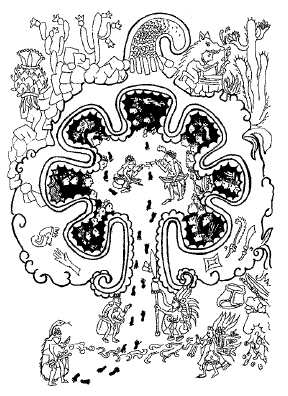
This illustration is entitled Chicomoztoc, which represents the seven caves and place of origin. In fact the word Chicomoztoc has a literal translation of a female womb. Each petal of the flower-shape design represents a tribe enclosed in a cave. Sahagún, an early Spanish Friar, stated that the Indians believed that these caves referred to a ship or ships from which their seven ancestral tribes disembarked. At the lower right you can see a bearded man. These men are the Toltecs, who later went to Chichén Itzá in Tulum. They claimed their ancestors came from seven tribes, and they were followers of the bearded god Quetzalcoatl, who we will discuss shortly.
At this point, let us be reminded that the Nephites were promised that their seed would not be utterly destroyed. That is in 2 Nephi 9:53 and D&C 3:16-17. As a result of the Nephite and Lamanite wars, the nation of the Nephites was destroyed, but not all of their people. For example, those who denied Christ were spared by the Lamanites, and of course, this occurred at approximately 385 A.D. By the time the Spanish arrived, there were no full-bearded Indians, only those with sparse, short beards. Therefore, any people with Nephite lineage were in the minority. By the time that the Spanish came in 1519, there was a great intermingling of tribes and intermarriage, so that may account for the lack of full-bearded men at the time of the Conquest.
Before we leave the Nephites, there are some things alluded to in their records that warrant our attention, and they are the metal plates containing the abridgment of their history, and the subject of stone boxes and wheels. Since the death of Joseph Smith, several metal plates have been found in the old world.
The subject of “wheels” is always mentioned by those who do not support voyages to the Americas before Columbus. Once again, since Joseph Smith’s day, numerous wheeled objects have been found.
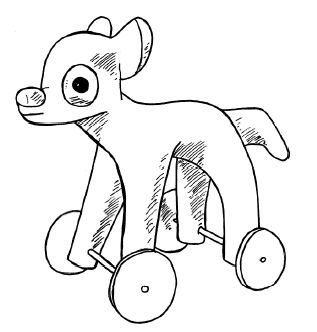
In most books, they call these small clay vehicles “toys.” But toys are not interred with adults, and many were found in graves of both children and adults.
Similar objects have been found in Phoenician and Babylonian graves, and they were regarded as vehicles for the dead in that part of the Old World. These are from Suza in Mesopotamia.They believed these vehicles carried the deceased through the underworld to be reborn like the sun in the east. Almost all the animals on wheels from Mesoamerica are related to the sun. Many of them have a sun rosette design on their wheels, which is very similar to the sun rosette designs of the Middle East.
But what is most interesting about the Mesoamerica wheeled objects is that they reveal that Mesoamericans have knowledge of five ways to attach an axle, so they most definitely had knowledge of a working wheel. My guess is that Mesoamerica cultures decided to discontinue making the wheel because the shape itself was considered a sacred symbol of the sun, and was no longer allowed to be used as a functional object. That is still the case in, for example, in Ollantaytambo, Peru, so I think wheel funerary objects were symbolic of vehicles to carry their deceased to their resurrection, the same as was believed in the Old World.
Now, going back in time to about 200 B.C., a Nephite scouting party came across a group of people in the land called Zarahemla. It was learned that these people arrived in the Americas shortly after Lehi’s landing, but to a land further north. They told their history to the Nephites the best they could because they had no written records. You all know the story of a child named Mulek who was the son of a Zedekiah. After Mulek’s father was assassinated, he was rescued by a group concerned with his welfare, and arrangements were made to escape out of the city.
Now, because the Phoenicians were of such great service to the Hebrew nation in ancient times, and because they were the most skilled seafarers of the day, it has been suggested by some Book of Mormon scholars that the Mulekites came to the New World in Phoenician ships. Another good possibility may have been that they came in Egyptian ships or even ships from Israel. As for the Mulekites themselves, the Uncle Sam stela that you saw before, may be a meeting of Coriantumr, who was the last king of the Jaredites, and a bearded Mulekite.
Something happened on the Western Hemisphere that left a great lasting impression on these early Americans. As a result, archaeologists are aware of an unexplained period of peace during the first two centuries after Christ, or at least until 150 A.D. Through the Book of Mormon, we read of this great event, when Jesus Christ came to visit the lost sheep of the House of Israel in the Americas.
Many LDS researchers, including myself, have spoken of Quetzalcoatl as being one and the same as Jesus Christ. In 1882, the Church president, John Taylor, said he believed Quetzalcoatl was Jesus Christ. Quetzalcoatl is a most interesting deity because his attributes fit right alongside our descriptions of Jesus Christ and the things that he did. But there are other myths and legends about a hero that are way off the mark, describing him as a drunkard and a warmonger.
One of the major problems with the Quetzalcoatl myth is that there were more than one Quetzalcoatl. Hundreds of years later, after the close of the Book of Mormon, the Toltecs and others adopted Quetzalcoatl to justify their divine kingship. Mesoamerican leaders took upon themselves the name of Quetzalcoatl, just as followers of Muhammad do today. This one (below) is from Chichén Itzá, dating to around the 12th Century A.D.
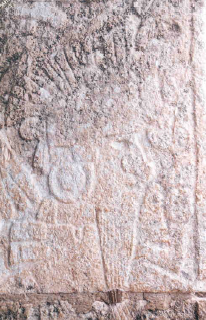
Another problem with Quetzalcoatl legends are that some are written after the Spanish arrived, and some have what is called a Christian gloss. That is, that early Spanish collaborators chose to mix Indian myths with Christianity on purpose.
There are many myths that I believe can be equated with Jesus Christ, stories that have proven to be consistent throughout Mesoamerica. I would like to read an Aztec poem entitled “Sons of Quetzalcoatl.”
All the glory of the Godhead
had the prophet Quetzalcoatl.
All the honor of the people
sanctified his name, and holy:
and their prayers they offered to him
in the days of ancient Tula.
Tula was the beloved city of the Toltecs, the ancestors of the Aztecs. So here we have the Aztecs, descendants of the Lamanites, who basically borrowed their religion from the Toltecs, who worshipped the bearded god Quetzalcoatl.
Let’s take a closer look at the Aztec Empire, which fell abruptly around 1500 A.D. Cortez came in 1519 and conquered the Aztecs in 1521.
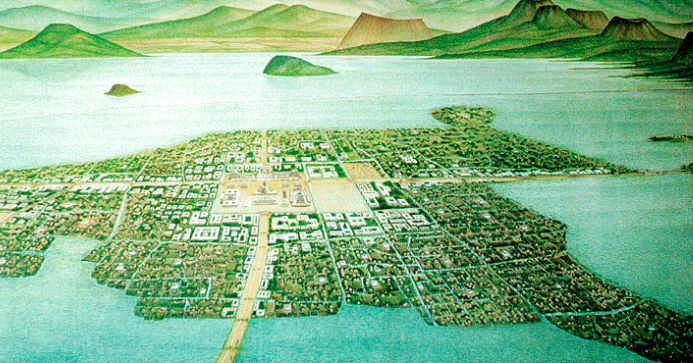
This is Tenochtitlán, now covered over by Mexico City. Archaeologists have uncovered portions of it. Cortés came with 700 conquistadors and conquered the Aztec Empire of over 2 million people. It is easy to understand such a massacre when you realize that the Aztecs thought Cortés was the bearded God Quetzalcoatl, the bearded God who promised to return. Now, this may have referred to one of the many men named Quetzalcoatl, who said they would return, or it was the god Quetzalcoatl, in other words, Jesus Christ, or perhaps, both.
Mesoamericans traditionally recorded events from the past and put them in their present history. Now, you have heard Allen Christenson when he was talking about the Popol Vuh, when they retold the story? They told it at night, and it was as though the past was brought into the present, and this was very common in Mesoamerica.
We have records after the Spanish arrived, as well as symbols of Quetzalcoatl, discovered in the surviving codex manuscripts, as well as symbols carved in pyramids and monuments that help us piece together the story of Quetzalcoatl, and I am going to explain some of these symbols.
Of the symbolic name, we can see that the feathers represent a heavenly origin, and the serpent an earthly one. Quetzalcoatl was considered to be both man of the earth as well as God of the heavens, just as Jesus Christ was born of an earthly mother and a Heavenly Father. Now, here are some examples of the feathered serpent.
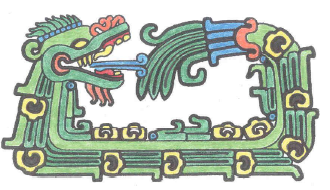
This is a line drawing of a rock carving, at Xochicalco, Mexico.
Around 250-200 A.D., something happened in Mesoamerica, especially at Teotihuacán. A temple dedicated to Quetzalcoatl was built with 200 sacrificial victims buried at the base. Archaeologists say that at this time in their history, there were some drastic changes being made. It is not any surprise to us that this coincides with the beginning of apostasy in the Book of Mormon.
It is now known that when one warring faction conquered another in Mesoamerica, the conqueror adopted the god of the vanquished as their god. From this point in time, we see two views of Quetzalcoatl. On the one hand he is associated with war, and on the other hand there remained the legends of the benevolent god of their ancestors.
In my oponion, here are some of the aspects of the gospel that I think are relevant. The first is baptism. The Spanish priests were amazed to see that baptism was practiced among the Maya in Mexico and Guatemala. The Maya word for baptism is “zihil”, and has a literal translation of “to be born again.”
But as Moroni warned against the practice of baptizing little children, this is exactly what the Maya did, as witnessed by the Spanish. According to the Book of Mormon, rivers and lakes were used for this ordinance. It was to be done by immersion, not by sprinkling. Sprinkling is the way that the Maya performed baptism.
In relation to baptism, shells are an important symbol. They believed that just as a snail comes out of a shell in the water, so to, man emerges from the interior-like shell, or womb, being born again.
This is a picture of Quetzalcoatl with a shell motif as a pendant. Here is another illustration of Quetzalcoatl showing not only the shell symbol, but that of the serpent. He also wears what is called the wind mask, from which he blows the breath of life into living creatures in his aspect of the God of creation.
Repentance was another religious act that the Spanish Catholic priests found already established in the New World. Indians confessed to priests, which was usually done like death bed repentance when they were sick. That’s just another part of their apostate practices.
Here you see a woman performing self-sacrifice by running a cord of thorns through her tongue to draw blood. Blood sacrifice was only required of one being, and that was the Son of God, our Savior, but the apostate Mesoamericans frequently performed blood sacrifices.
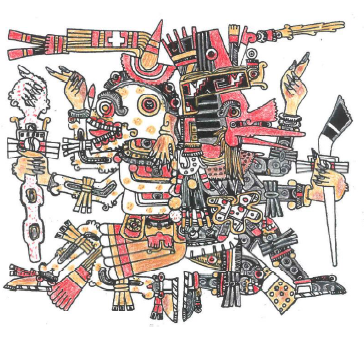
Probably one of the more remarkable stories of Quetzalcoatl, and one that deals with an aspect of the life of Christ, is the deity’s descent to the underworld, or Hell. Quetzalcoatl sacrificed himself and sprinkled the bones of the deceased with this blood. As a result, the bones of men are born again and became alive. (above) In this skeleton, there is a living heart.
I am just going to read one more Aztec poem, and their words say so much to us:
The plumes of the quetzal (which was the most prized feathers of royalty),
the works of iridescent jade (the most prized stone and symbol of life), all broken and gone
the memory of a beautiful world,
God-filled, truth-filled.
This poem may reflect that these ancient Americans once had the true gospel, and there is much in Mesoamerican studies to enhance our understanding and appreciation of the world of the Book of Mormon and its message for our time.
_____


